Tim Parnin Build (featured in The Tonequest Report)
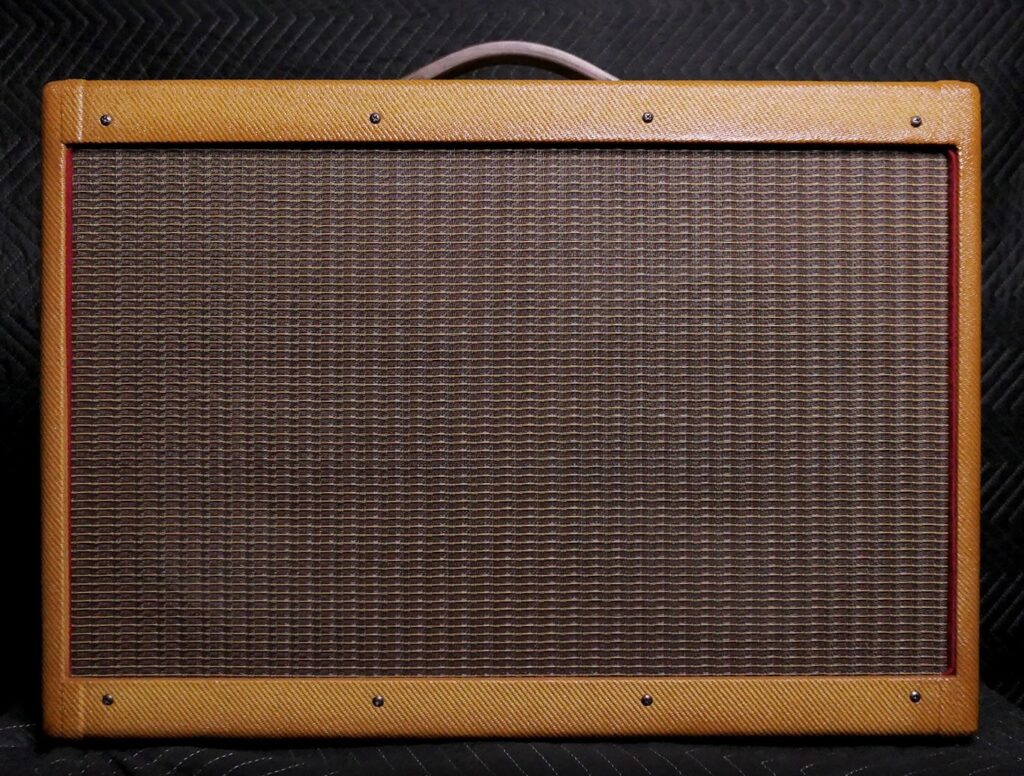
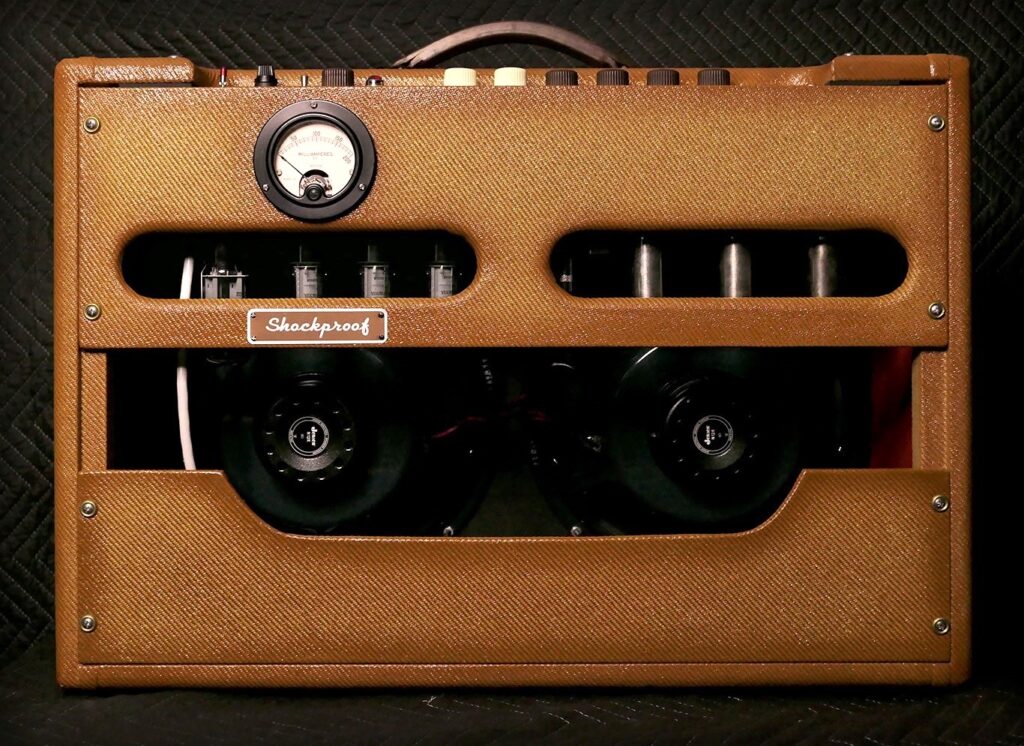
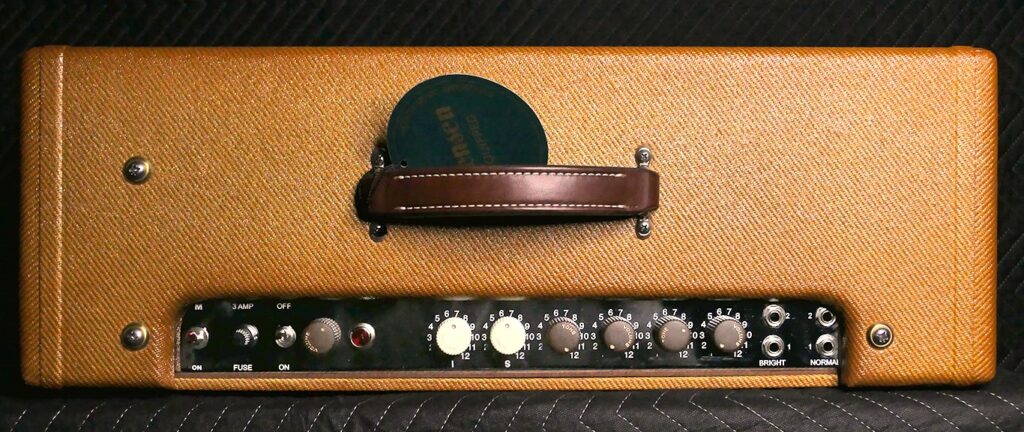
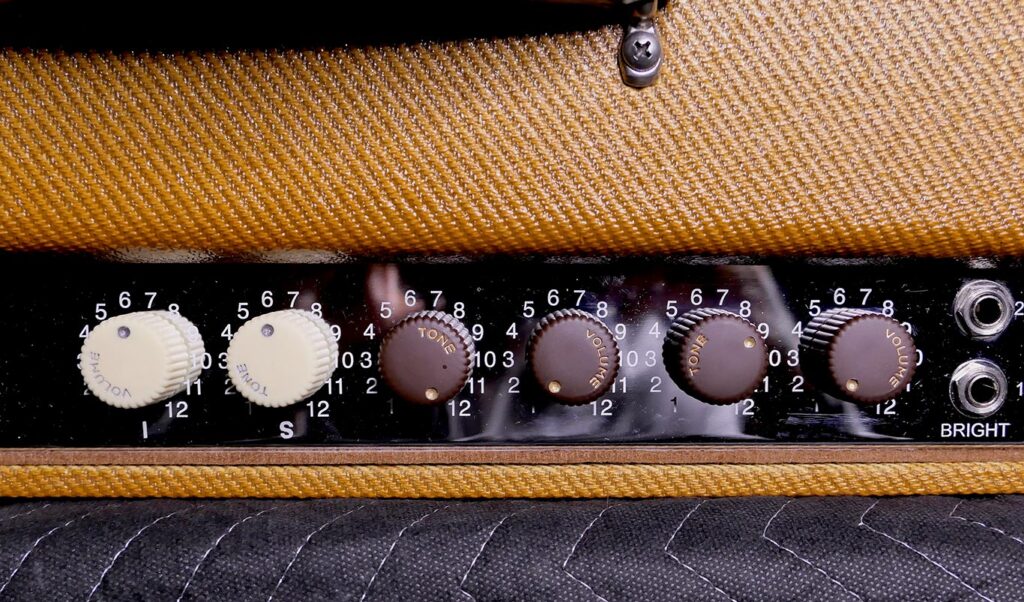
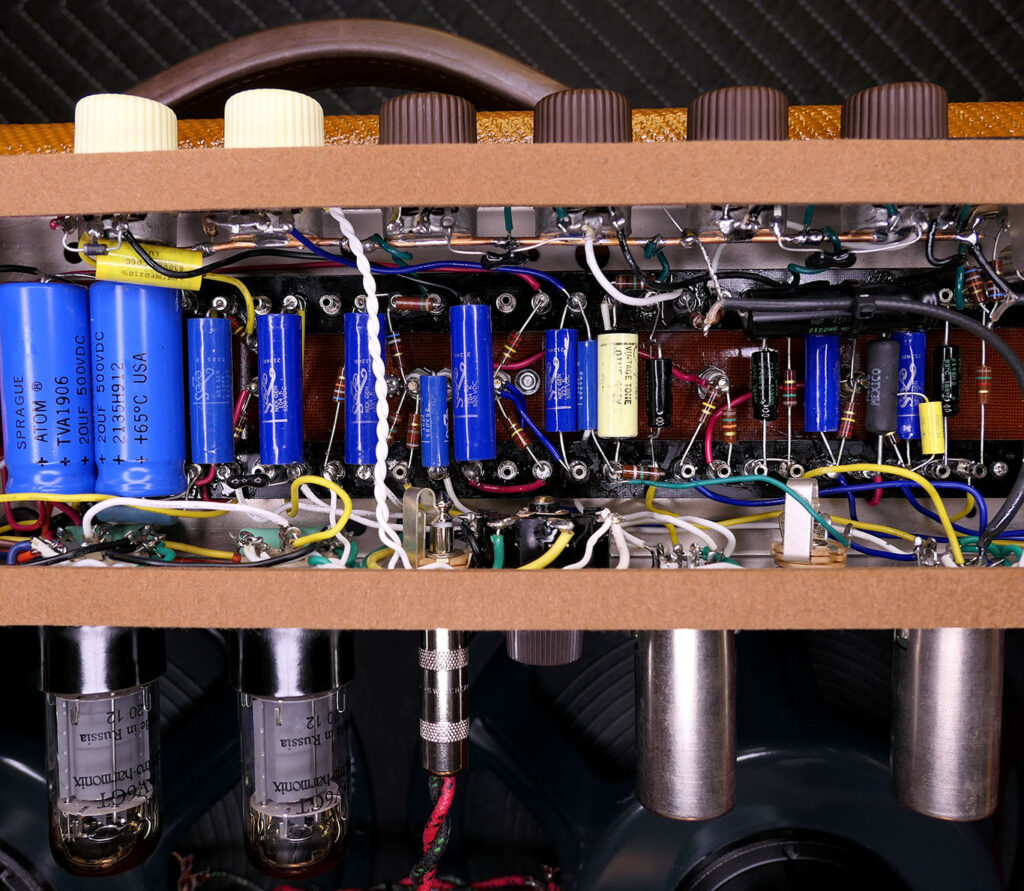
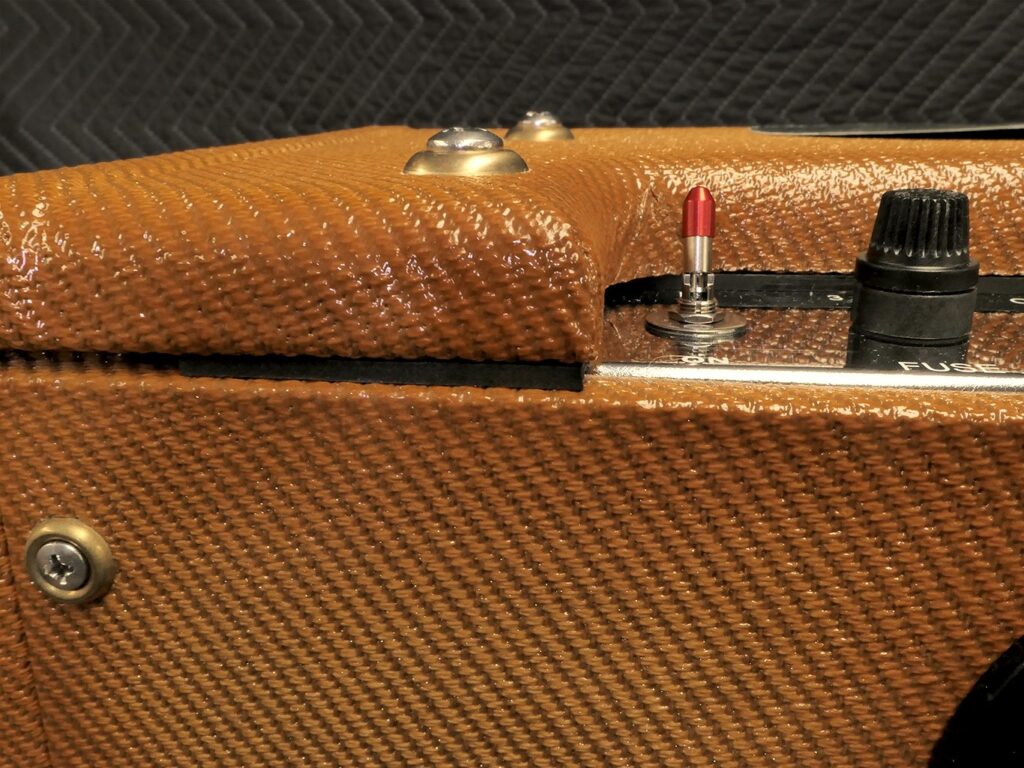
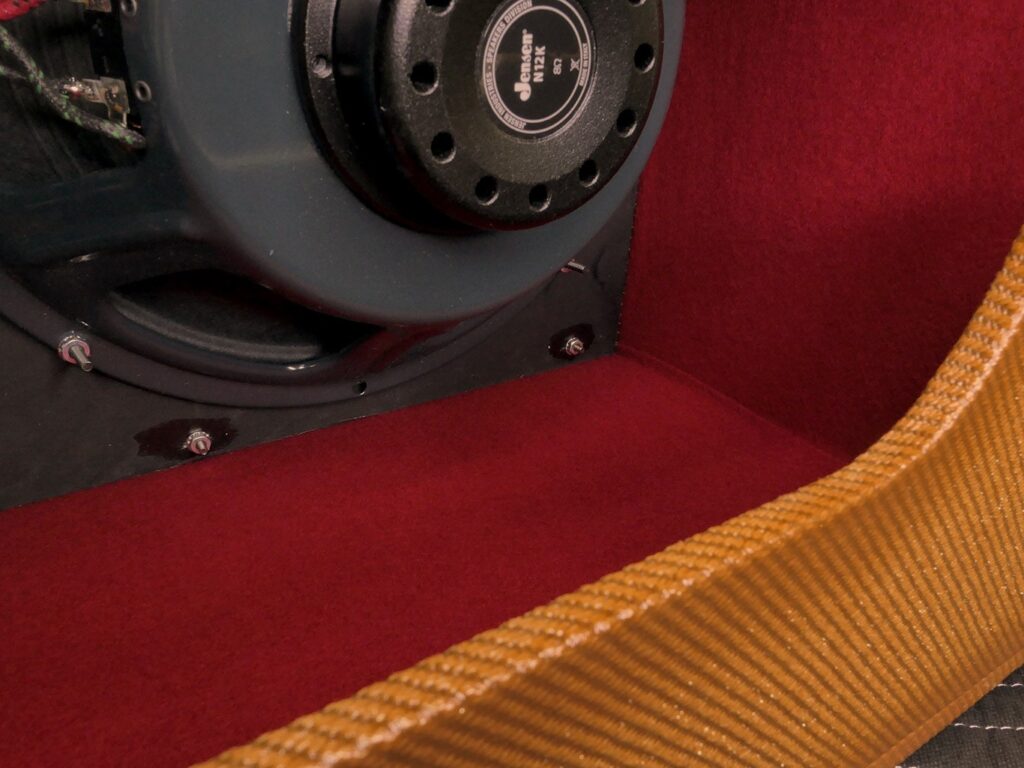
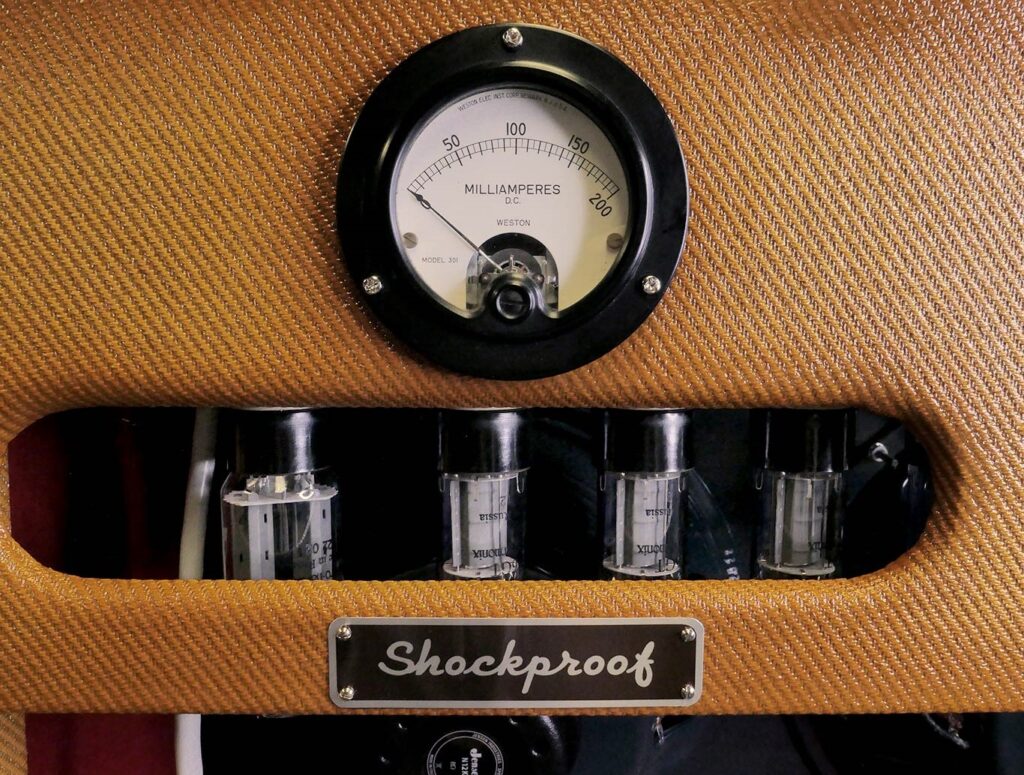
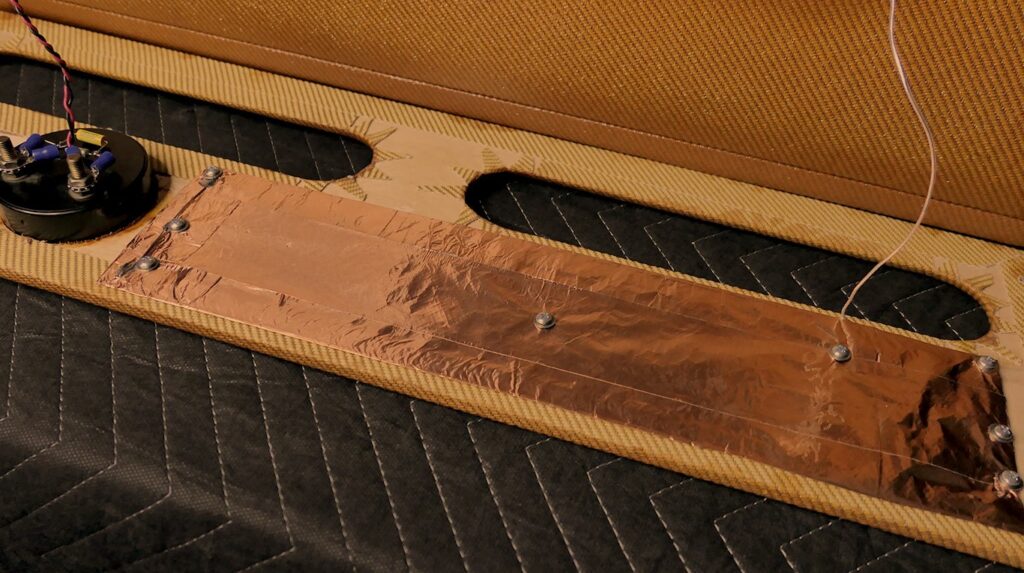
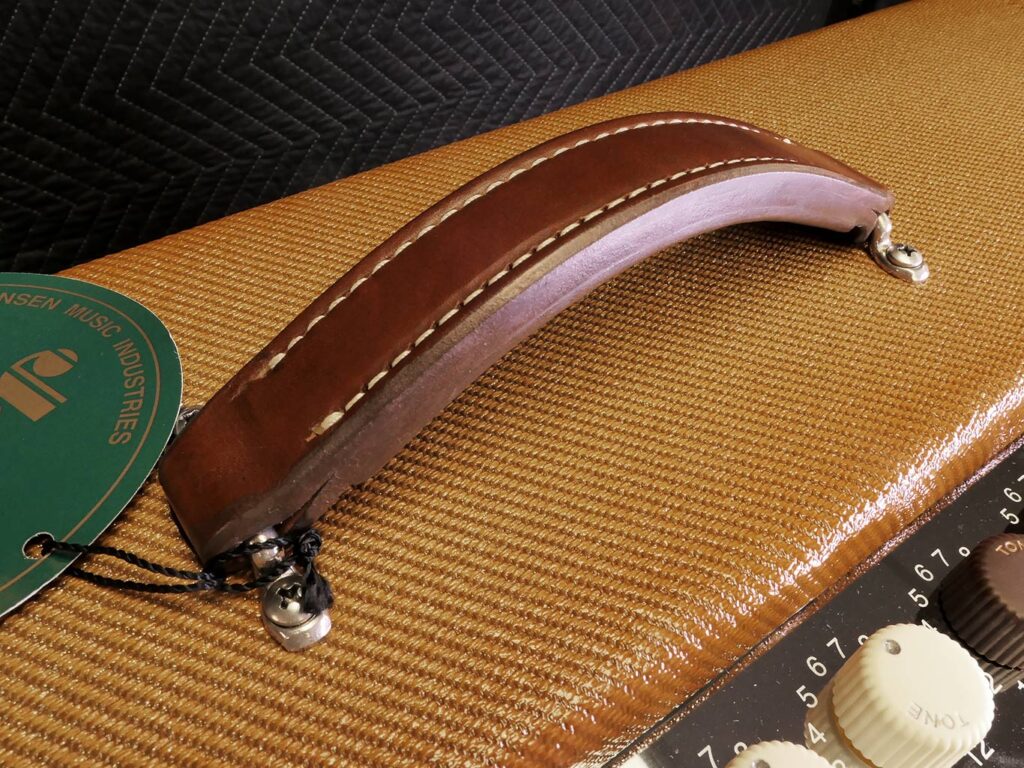
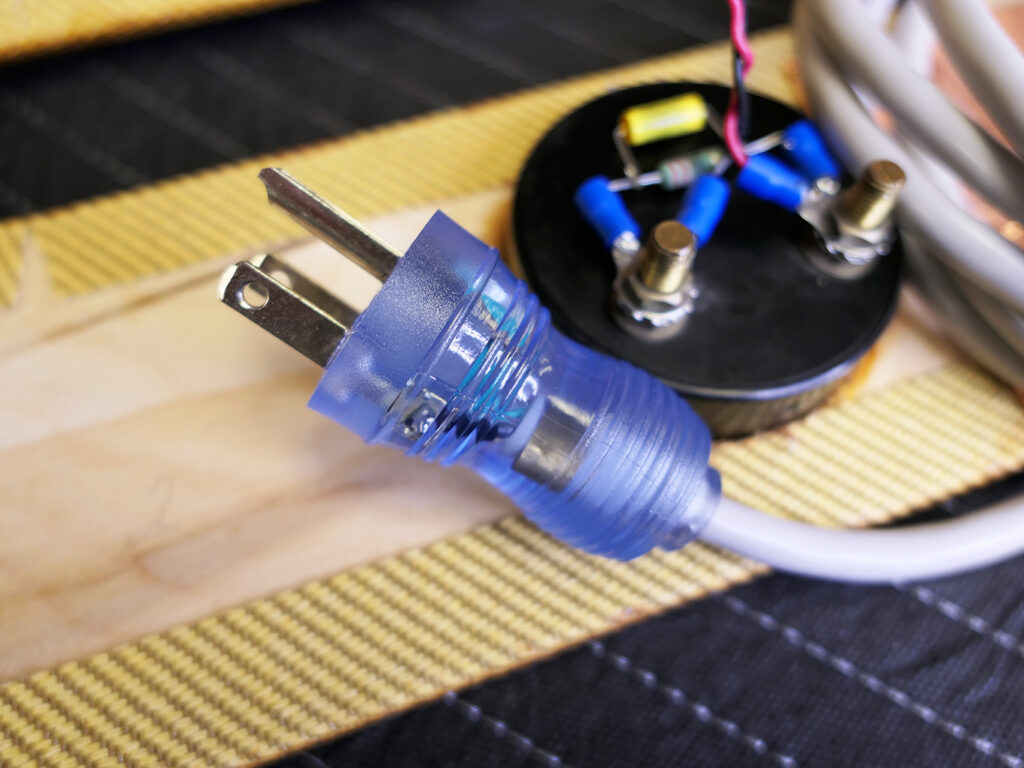
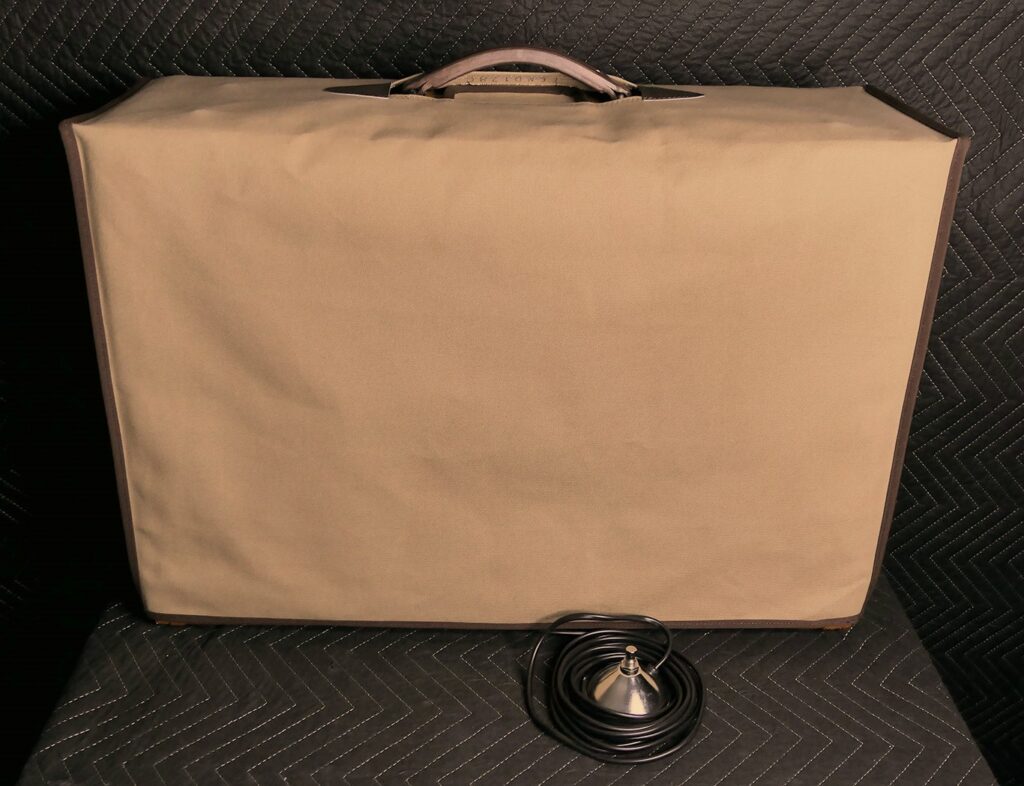
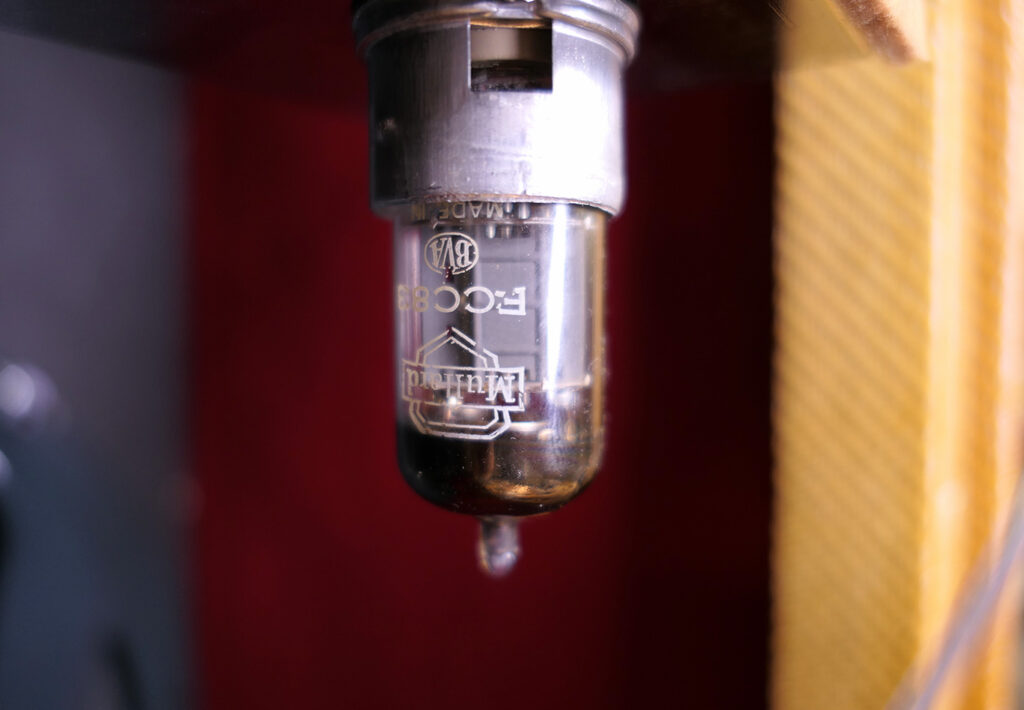
Tim Parnin’s Custom Build
The Back Story
Client and ace guitar player Tim Parnin of Falling Stars and Sweet Apple bands, the Guitar Riot guitar shop in Cleveland and The Rock and Roll Hall of Fame brought me his vintage 1963 Fender 6G3 Brown Deluxe for restoration, along with a handmade modern clone of the same circuit. This circuit has enjoyed a lot of attention due to some high praise from famed player and collector Joe Bonamassa and others. I’ve had a long love affair with this particular design and used the preamp in a variety of handmade amps with different power sections over the years – it never fails to satisfy. It’s unique in the evolution of Leo Fender’s designs, gainy and colorful, and has an excellent (though a bit noisy) bias oscillating tremolo. Tim expressed some “wish list” thoughts around it, not suspecting this would get my wheels turning…
For Tim’s use the 18-20 watts these amps normally produce through a single 12″ speaker was shy of the stage volumes he needed. The clone sounded stiff compared to the original – due, in my estimation, to some parts choices. What could I build him that hit all the marks, along with my own refinements to this excellent design based on my experience?
We must remember that Leo was mass-producing his product by the standards of his day – the modern builder has the luxury of not cutting corners in any aspect of a build. I feel that a proper restoration of these classic circuits must never include parts that will degrade their tonal character and parts choices in a new build must be quite intentional. Components must be selected with an eye toward achieving distinct goals. My topmost goals are always sonic integrity, refinement where possible, reliability, beauty and lasting value. Least considerations are effort required and cost of parts.
So here was the mandate:
Preservation of the original character of the ’63 Brown Deluxe 6G3 tone
More stage volume
Light weight
Classic appearance – no radically modern design elements (plexiglas, etc)
Simple, right?
In the words of my great friend, mentor and occasional collaborator J.C. Morrison: “There are a million right ways to do everything.” With those words echoing in my skull, I began my own attempt to bring Tim’s preferences and a few refinements to this enduring design by Leo.
The Build Features
- Finger-jointed pine cabinet with layered gold sparkle and aged shellac finish. Multiple thin layers of shellac make a great sounding finish that is also non-toxic and durable. It consists of pulverized insect shells and pure alcohol as a solvent which dries out fully leaving a hard shell, and is commonly used for musical instrument finishes, both violins and guitars. There is no vegan option that works quite as well.
- In every build, there is at least one “happy accident”. I incorporated the gold sparkle in the center of the panels to lend a unique and elevated appearance, but not stray too far from the classic looks that Tim prefers. The gold sparkle is not immediately obvious but becomes very lively and bright when stage light hits – a real “wow factor”. As it turns out, Tim’s favorite music is Glam, and T. Rex and Mick Ronson are some of his favorite artists and musical inspirations. So – happy accident or signals from the ether? You decide.
- A wool felt liner in complimentary red color serves to soften the backwave in the cabinet, a trick I learned from some Japanese horn-speaker builders that do incredible DIY cabinets for single driver hifi speakers. It also serves as a gasket for the sides of the floating baffle, which is anchored to the cabinet only at the top and bottom. I’ve found that friction from baffle edge vibrations can cause objectionable noises, especially when miked in the studio. This layer of felt addresses that shortcoming.
- A handmade custom heavy leather handle by Bob Schell of Brookwood Leather is more durable and beautiful than the plastic counterparts that are currently offered on production amps. A canvas “Victoria Luggage” type case refers back to the original tweed cases that were offered as an option.
- Polyester film and foil coupling caps as in the original circuits which employed Ajax blue molded signal capacitors. The modern reissues by Sojo which I used in this build have a somewhat different sonic character than the originals due mostly to their lack of hard encapsulation, but have a pleasing depth and musicality. Caps “sing” when musical signals are run through them, and materials matter quite a bit as they have different sonic signatures. Likewise, they have internal resonances that can be heard and vary with geometry and encapsulation materials. The Ajax caps were encased in a very hard plastic that to my knowledge has not been duplicated in modern types but there are a number of excellent candidates these days in the film-and-foil arena.
- Carbon composition resistors in direct signal path, and mil-spec wirewound resistors in power supply. Carbon composition plate load resistors are essential to a Fender restoration or Fender type build, but in the power supply wirewounds offer distinct advantages that won’t negatively affect tone. Wirewound resistors are less prone to heating, drift and noise.
- Vintage style electrolytic capacitors with similar formula and ratings as the original Fender type. Modern electrolytics have their place in modern amplifiers and hi-fi circuits, but not in classic Fender restoration or Fender type builds. Yes, modern capacitor technology is vastly improved – we see caps with vanishingly low ESR, higher current handling and ratings of 10,000 hours or more as opposed to the 2000 hours accorded to vintage types. For hi-fi upgrades or modern designs they are excellent! In this case we are seeking a preferred sound, and that sound is altered considerably by using those types.
- A handmade brown phenolic turret board for component mounting, mounted to the chassis on anti-vibration rubber isolation mounts. The vulcanized paper eyelet boards that Leo used tend to warp over time due to moisture absorption and constant heating and cooling, causing intermittents.They can also become conductive in some cases. Phenolic turret boards eliminate those possibilities. The grain of the layered linen in the resin has a beauty that matches the classic look and feel of the build, and the stability and electrical properties are top notch.
- Vintage type paper wound 40 watt output transformer with switchable 4/8/16 ohm taps for use with outboard cabinets. A negative feedback control on the top panel to dial in cabinet resonance, variable from “loose” to “tight” control of speakers. Speakers have a dialogue with the output stage of the amplifier! This is referred to as “counter-electromotive force” or “back emf”. As such, an adjustment pot is useful to tune this nexus by ear per cabinet or speaker type.
- Jensen Neodymium speakers on board for smooth sound, high power handling and light weight. The whole build weighs in at 32 lbs, easy to carry. The Neos have a tiny magnet structure that belies their 100 watt / speaker power handling capabilities.
- 4 x 6V6 power tubes in the power section yielding 36 measured watts at clipping (a straight-up doubling of the original 6G3 power section), easily adjustable up or down with change of rectifier tube and rebias. Operating points throughout the circuit landed exactly to the Fender schematic with a 5U4GB fitted. 2 x 6L6GC could also be fitted as a preference and will preserve correct matching to the speaker load.
- Bias meter with locking activation switch for quick verification of power section operating point, or field tube replacement. The fitted Weston meter was made in the 50’s, bought at a hamfest in the 80’s but finally found a home in this build. It’s ruggedized and beautifully built, a throwback to a time when quality was foremost in the construction of measurement equipment. I have sourced modern equivalents by Simpson for subsequent builds – they bear no resemblance to the common plastic Chinese product of today.
- Chassis is mounted with thick vibration absorbent 70 Durometer Sorbothane sheet gaskets to isolate electronics from vibration. Sorbothane is a unique plastic that acts vibrationally as a liquid when loaded correctly, and is used for isolating industrial machines from the floor, among other things. Combos have a very high sound pressure level inside the box where the chassis is mounted and Isolating the chassis from vibration can extend tube and component life. Thick felt gaskets are also employed at all back panel/chassis contact surfaces to quell objectionable rattles at higher sound pressure levels.
- Back panel shielding is constructed of layered copper and faraday cloth which unlike conventional shielding is capable of blocking cell phone signals. Original tweed amps have an asbestos panel (!) and no shielding – certainly the electromagnetic environment of the 1950’s was much cleaner than today. Although a single panel on the rear cover alone can not be 100% effective at blocking electro-magnetic interference like wireless modems and cell phones, it provides at least some level of protection from radiated noise.
- Tremolo footswitch and tremolo circuit modified to reduce the “motorboating” at the deeper settings that are a characteristic of the original 6G3.
- And finally…a medical grade power cable that is virtually indestructible, and old school lead bearing eutectic solder used throughout. We needn’t worry about this build hitting the landfill and poisoning ground water – it’s built to last. Non-eutectic solder forms a bond at a range of temperatures, as opposed to eutectic solder which has a strict melt point and bonds properly and reliably at a single temperature. It’s the preferred solder for military applications.
That’s the rundown! As you can see, some of my choices were driven by repair experience and seeing things that commonly break over time, some choices were driven by tips gleaned from high end audio building, some by studio experience, and others were just meant to be. I’m super grateful to Tim for making this build possible and look forward to any final tweaks, if necessary – after all, the stage is the final destination for this gigging amp and leeway for adjustment is baked in.
Based on our results with this build and the amount of fun I had making it, I’ve decided to do a strictly limited edition of 4 more in different colorways with the above features. Each build will be unique and named for the person commissioning it. Contact me for details at blackiepagano@gmail.com and thanks for reading!
